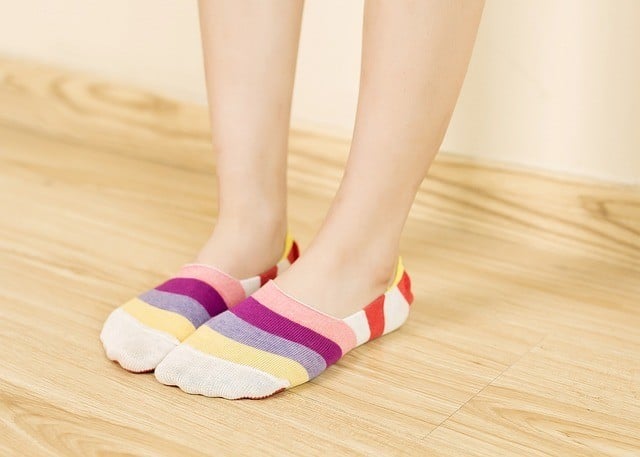During cold winter nights or long work hours, wearing socks for long periods of the day may or may not be by choice. In both cases, you may not have previously known about the risks to your health of always wearing socks.
Tight socks and feet relief:
Tight socks, including compression socks and diabetic socks, may cause pressure on the blood vessels in the feet and cause obstruction of blood flow to them, thus retaining blood in them and reducing perfusion. The lack of blood supply to the area causes cell death and the appearance of painful abrasions and ulcers that are difficult to treat. Of course, this applies if you wear it for long periods of time, or for more than what your doctor prescribed for you.
Poor hygiene and numerous infections:
Wearing socks for long periods of the day, especially with closed shoes and during the summer, or even wearing the same dirty pair on a daily basis without washing them, hinders ventilation, and with the presence of sweat and humidity, it creates a suitable environment for the growth of microbes and germs and the occurrence of skin infections, fungi, and unpleasant odors.
High temperature of the feet:
Some of us wear winter socks while sleeping in order to combat the winter cold, but actually wearing socks may raise the temperature of the feet and thus the body to a high degree, which affects the quality of sleep.
But what to do on a cold winter night, or overtime at the office? Here are some tips to keep your feet healthy:
First: Try to avoid nylon socks that hinder ventilation and evaporation of sweat. It is also preferable to wear raw cotton socks or soft cashmere socks, which provide a suitable environment for the feet to breathe and warm them at the same time.
Second: Stay away from tight socks, and choose what suits your foot size. Extreme pressure, as we mentioned, hinders perfusion and causes skin cells to die.
Third: If you are one of the people who cannot resist the cold in winter, it is recommended to soak your feet in warm water before going to bed, or wear thick socks under the covers, and when your feet feel warm, take them off and avoid sleeping in them until the next morning.
Fourth: Keep your feet clean by washing and drying them well when you return home, especially the areas between the toes where there is a higher chance of microbial growth. Socks should be changed daily, and we should not wear the same pair more than once before washing them.

